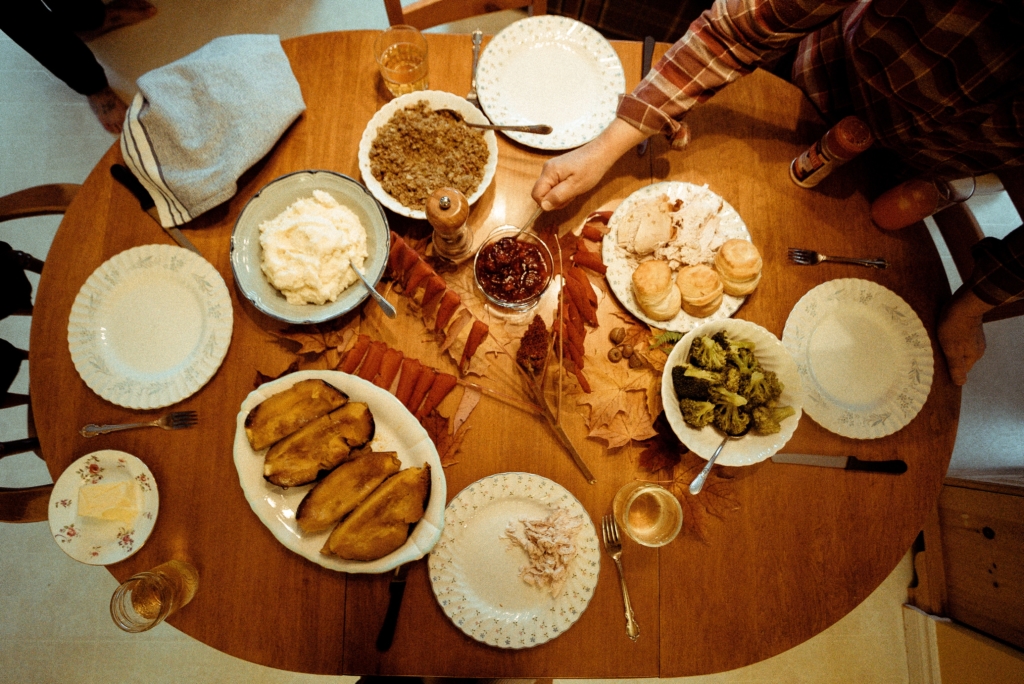Beginning with Thanksgiving tomorrow, the holiday season has officially begun. This most likely means family gatherings and festive holiday cuisine, which often carry a heavy environmental impact when it comes to overall waste, including the waste of non-recyclables, food, and energy. According to the EPA, it is estimated that a 25 percent increase in household waste occurs during the holidays.
Environmental accountability may be one of the last things that come to mind while you’re planning for Thanksgiving, but we want to encourage you to make your celebrations a little greener this year, especially when it comes to planning, shopping for, cooking, and serving your big meal. We all have a lot to be thankful for, so it’s important to recognize that none of it would be possible without Earth and its abundance of resources. By always seeking to demonstrate your respect for the planet, you can help ensure that all of the things we are thankful for continue to be available to us and to generations to come.
We’ve compiled a list of some of the top things you can do to create a green holiday kitchen this Thanksgiving.
1. Plan your meal
Take the time to mindfully craft a Thanksgiving menu based on the number of attendees you are anticipating. This simple action will help you determine what items you need to buy and what you may already have in your kitchen so that you can prepare just the right quantity. When you put together a shopping list, include only items you need and stick to that list. The goal is to prevent food waste from happening in the first place. By avoiding impulse purchases, you’ll most likely avoid overpreparing food.
2. Shop locally
Most of the food we eat regularly travels great distances before arriving in our grocery stores and onto our plates. Reduce your carbon footprint this Thanksgiving by purchasing ingredients that have been produced locally. Not only does buying locally reduce transportation emissions, but it also helps support community farmers and the overall local economy.
3. Use your own shopping bags and recycle boxes and bags your food arrives in
Single-use plastic bags are a major contributor to global plastic waste and are non-recyclable, which means they often end up in oceans, rivers, and streams posing a serious threat to wildlife. While shopping for Thanksgiving, one reliable way to avoid having to reach for these single-use grocery bags and contribute to this big environmental problem is to bring reusable bags. If you’re wary about hitting the grocery store at a busy time during COVID-19 and are having your groceries delivered to you, make sure that you recycle the boxes or bags in which your grocery items arrive in. The majority of delivery boxes are made from paper that can easily be recycled, and if your groceries arrive in reusable bags, be sure to save them for later use.
4. Be mindful of your energy use
There are multiple ways to cut back on your Thanksgiving energy use. Simple actions like cooking several dishes simultaneously, turning off the heater while you cook, using lids on pots to retain heat, and opting for washing your dishes in your dishwasher as opposed to hand-washing them can all go a long way in helping you avoid unnecessary energy waste.
5. Minimize plastic use
Avoid using disposable plastic utensils, including glasses, plates, and cutlery, that generate a huge amount of non-recyclable waste. Instead, consider utilizing tableware made from bamboo, or utilize your good old-fashioned china, silverware, and glasses. Also, be sure to opt for cloth napkins as opposed to paper napkins. You can even ditch plastic by using reusable food storage containers for packing leftovers.
6. Don’t waste food
Once you’ve wrapped up your Thanksgiving meal, don’t forget to donate your leftovers to a food bank or nearby homeless shelter. And of course, remember to compost your food scraps.
Kick-off your holiday season focused on sustainability by making a few small, eco-friendly changes this Thanksgiving. The tips above will help ensure you are being considerate of the planet as you’re celebrating this holiday season.
Want more green living ideas? Then head to the Spring Power & Gas blog to learn how you can effectively make more sustainable living approaches.


